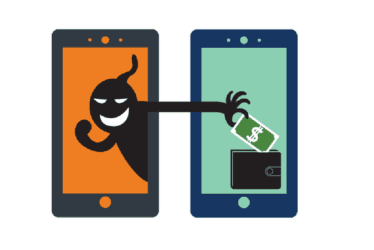China’s mobile security incidents: Beware of malware!
China has been a place of cheap smartphones. They offered phones at very low price, but with respectable specs. However, the number of China’s mobile security incidents is also alarmingly high. Here are some notable ones!

1. Recent information leak
As reported, recently there have been reports of Android smartphones sending users’ data back to a main server in China. Security researchers have found this issue, and have put up a warning for customers. The exact number of affected devices is unknown. However, it is estimated that millions of Android smartphones produced by Chinese brands can be at risk. One notable example is Blu, which admitted that over 120,000 devices has been affected, and the company has since released an update to patch the security issue.
The security flaw in question has been sending users’ location, contact lists, and the full text messages on their phones to a location in China. The pre-installed firmware can also collect and transmit information about the apps installed, and even modify them. Worse, it can even download and install apps remotely, bypassing the phones’ security. All this is done without the users’ consent or knowing. This is the latest of China’s mobile security incidents, that you need to be careful of.

2. HummingBad Android malware
Only earlier this year, it is estimated that as many as 10 million Android devices are infected with the HummingBad malware. Another 85 million Android devices are vulnerable to this malware attack. On the surface, the malware looks just like a “click fraud” – tricking customers to click on an ad. However, the malware then will have access to the phone’s system, and the entire phone is at the mercy of the attacker. At the least, the malware will send the data of the phones to a company in China. This is yet another serious security incident coming from this country.

3. Android.Bgserv
A while back, there was a malware named DroidDream, and Google successfully neutralize the threats, by issuing a clean-up tool for infected devices. However, soon they will have to deal with another: the Android.Bgserv. The author of this malware was smart: using the hype of the clean-up tool, they also release the same tool as well, but with the malware attached. This malware stole the phone’s data such as the IMEI number and the phone number, and then sent the data to a server in China. This is also a serious one of China’s mobile security incidents.

4. DroidKungFu
Back when this was discovered, the DroidKungFu used a brand new attack: sending malware via an update. The malware creator somehow managed to force his way into the Google Store with a legitimate app, and once enough people have installed it, the malware will be distributed via an over-the-air update. This update attack was then called DroidKungFu. It was developed in China, and security experts caught sight of it. Fortunately, Google was notified in time, and dealt with the threat before any big damage was done.

5. Spyware preloaded on cheap Android smartphones
This is perhaps the most common tactic of getting users’ information. By preloading a phone with a harmful software at sale, few customers are going to suspect it. It is more dangerous from cheap smartphones, as people are easily swayed by the cheap price. In 2014, a big numbers of cheap smartphones from China were found to have these spyware pre-installed. The spyware could steal users’ data, and then send the information back to a Chinese server. Also, many of those cheap phones are sold via respected online vendors! This case wraps up the list of notable China’s mobile security incidents.

China’s mobile security incidents: Beware of malware!
Chinese phones can be cheap while having wonderful specs. However, if you are not careful, you will have severe mobile security risks. Only buy from trusted brands, don’t click on strange links or install apps not from the Google Store, and run security checks with a dedicated security app.






